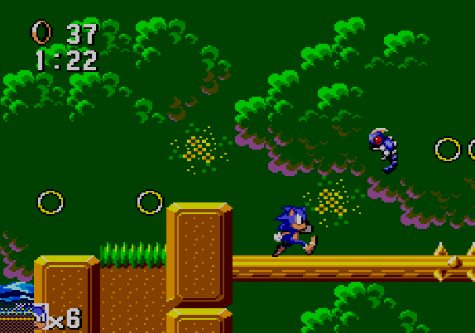This post has not been edited by the GamesBeat staff. Opinions by GamesBeat community writers do not necessarily reflect those of the staff.

In 2011, Portal 2 impressed me with its engaging narrative even though it featured a mute main protagonist and only three speaking characters. In 2010, I found myself absorbed in the continuation of my own personal story within Mass Effect 2 that included the choices I made when playing its predecessor.
In 1991, I was four years old, and the concept of seeing someone control a car on the television was mind blowing. This was the first time I’d seen a video game. My dad was playing Lotus Turbo Challenge 2 on the Commodore Amiga, a popular system in the United Kingdom at the time. My eyes were fixed on the screen, and my jaw was locked in an open position. I was experiencing one of those you-had-me-at-boot-up moments.
Like most children, I was in a constant pursuit of anything that’d take me away to other worlds — usually books and television shows. Video games reached out to me on another level with that golden feature still being sought after by modern-day developers: immersion.
Looking at games now, you might think finding immersive 8-bit and 16-bit titles would have been more difficult. Those older releases could have been even more primitive than they were, and they would still have set off a spark in my young imagination.
I began drawing pictures of characters I’d encountered. I made up my own tracks for racing games and planned out new levels for platformers. Whenever I was tasked with writing stories at school, my submissions were similar to what you’d find on one of today’s bad fan-fiction websites.
A year or two later, I was blessed with the greatest Christmas gift I could’ve wished for: a Sega Master System. Originally, I’d wanted a Nintendo Entertainment System, but my mother convinced me that Sonic the Hedgehog was cooler than Mario. Like someone who has had religion instilled into him or her by parents, I still find myself taking the side of the blue blur over the mustached plumber in that age-old debate — despite Sonic’s descent into Garbage-ville over the last decade or so.

Many parents see video games as bad for children because they think that consoles turn the little ones into zombies who trade in creativity for high scores and mindless acts of violence.
But I argue against that notion. With a game system in my bedroom, I was able to spend even more time in lands of fantasy and wonder. Stepping into the shoes of a virtual hero and playing that role allowed me to connect with that character more versus interacting with him or her through television or books.
A friend and I became obsessed with the Sonic series, which turned out to be a huge inspiration despite each entry only being one-to-two hours in length. We created new, personalized characters in our imaginary Sonic universe, and we’d tell stories of their adventures alongside the speedy rodent and his two-tailed fox buddy.
Obviously, I’m not affected in the same way now that I’m in my 20s. These days, I’m more concerned with the quality of gameplay, presentation, and innovation. But my first experience with games was far more innocent, reflecting my young, carefree age.
If I was a six-year-old boy today, I believe nothing would change. Instead of pretending I was traversing Marble Zone and avoiding the lava by using cushions, I’d be piling up boxes to waist-high level and fighting alongside Commander Shepard, destroying all the invisible alien invaders in my living room. Perhaps I’d go to the park and hunt dragons by shouting at the sky.
The technology might have changed, but the mind of a child has not.
